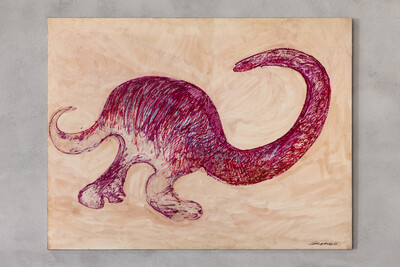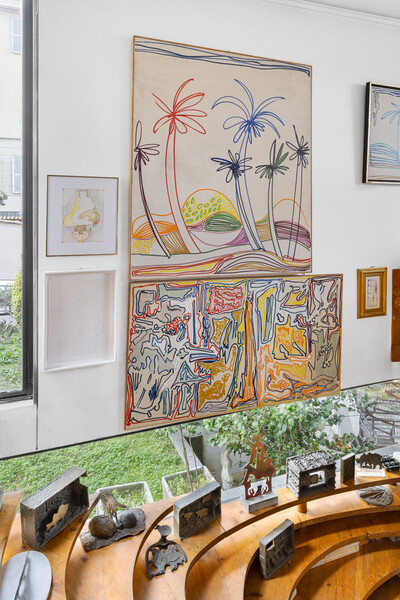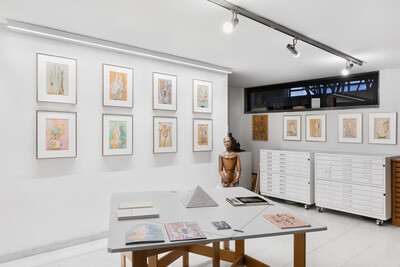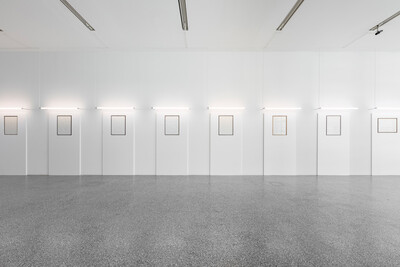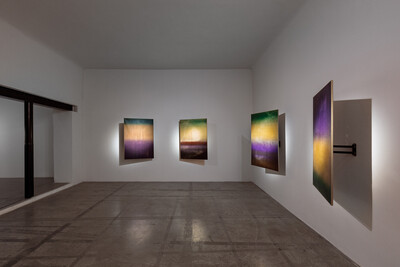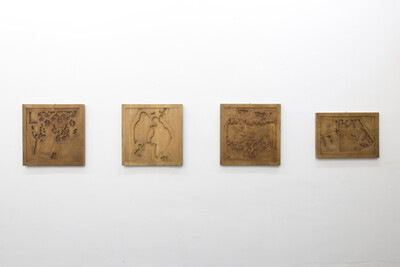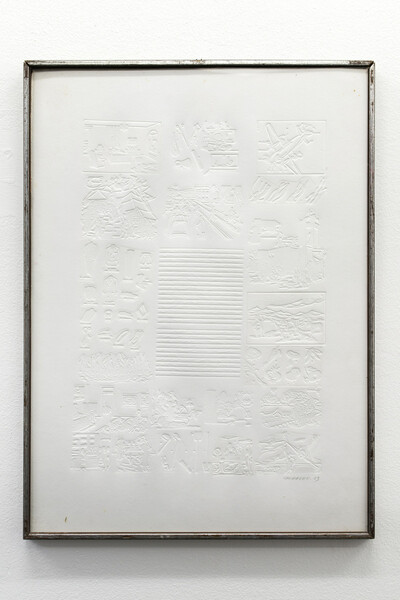Ezio Gribaudo
Ezio Gribaudo (1929 – 2022) was an artist and art publisher who lived and worked in Turin.
He was trained in arts at the Academy of Brera in Milan, and later at Turin Polytechnic Faculty of Architecture.
Like an illustrated dictionary or a glossary of key terms, Gribaudo developed his work through the articulation of a number of basic themes, starting with his Flano (Flong) and Logogrifo (Logogriph) works.
By assimilating into his artistic trajectory the job of art publisher, in which capacity he worked with some of the major figures in modern and contemporary art, Gribaudo developed a series of impactful publishing ideas that influenced his artistic output, part of which was forged in dialogue with different printing machines and mechanisms.
He created books for Edizioni d’Arte Fratelli Pozzo, Fabbri Editori, Abrams, Hachette and many others. Many monographs on artists were published under his direction in the series Le Grandi Monografie, which he conceived and edited for Fabbri Editori (1966 – 1990), and which included monographs on such major artists as Karel Appel, Francis Bacon, Alberto Burri, Giorgio de Chirico, Marcel Duchamp, Hans Hartung, Wifredo Lam, Man Ray, Joan Miró, Henry Moore, Antoni Tàpies and many others.
Over the years, Gribaudo was likewise committed to promoting notable cultural events and exhibitions, including his contribution to the ICAR (International Center of Aesthetic Research), which Michel Tapié founded in Turin in 1960. Gribaudo and Tapié grew to be frequent collaborators, and Gribaudo edited and published a number of groundbreaking books with Tapié for Edizioni d’Arte Fratelli Pozzo, including Devenir de Fontana (1961). In Turin, he organized the exhibition of the Peggy Guggenheim Collection in 1976 at the Galleria Civica d’Arte Moderna, and Jean Dubuffet’s exhibition-performance “Coucou Bazar” in 1978 at the Promotrice delle Belle Arti with FIAT.
–
Ezio Gribaudo’s artistic production has been awarded a number of prestigious international prizes, among which, the 9th Rome Quadriennale (1965), as well as the Graphic Arts Prize at the 33rd Venice Biennale (1966) and at the 9th São Paulo Art Biennial (1967). In 2011, he was invited to participate in the Italian Pavilion of the 54th Venice Biennale.
Gribaudo has had solo shows at Galleria d’Arte La Bussola, Turin (1959); Galleria Viotti, Turin (1968); Galleria Schwarz, Milan (1967-1972); Galerie de France, Paris (1968); Kunstverein Göttingen (1971); Petit Palais, Musée d’Art Moderne, Geneva (1971); Museum of Modern Art, Rio de Janeiro (1973); Marlborough Graphics Gallery, London (1974); David Hockney / Ezio Gribaudo, Galleria Michaud, Florence (1974); Nakhamkin Fine Arts Gallery, New York (1981); Galleria d’Arte Moderna Toninelli, Rome (1982); Italian Cultural Institute, New York (2013); Biblioteca Nazionale Centrale, Rome (2015); Pinacoteca Albertina, Turin (2016); Biblioteca Nazionale, Turin (2018); Casa Museo Jorn, Albissola Marina / Museo della Ceramica, Mondovi (2019); Etablissement d’en face, Brussels (2019); Museo Nazionale del Risorgimento, Turin (2019); The Bahrain National Museum, Bahrain (2020); Sans titre, Paris (2022 & 2024); Grazer Kunstverein (2023); Museion - Museum of Modern and Contemporary Art, Bolzano (2024); Galleria Franco Noero (with Mario Garcia Torres), Turin (2025).
Ezio Gribaudo’s works are featured in the permanent collections of important institutions and museums, including the Museum of Modern Art (MoMA), New York; Museum of Imagination, Hudson, New York; Peggy Guggenheim Collection, Venice; Ca’ Pesaro, Venice; Museum of Modern Art, Rio de Janeiro; Museum of Modern Art, Eilat; The Robert McDougall Art Gallery, Christchurch; Musée des Arts Décoratifs, Paris; Petit Palais, Musée d’Art Moderne, Geneva; The National Gallery, Prague; Maison de la Culture et des Loisirs, Saint-Étienne; Fondazione Fiera Milano, Milan; Kunstverein Gottingen; Galleria d’Arte Moderna, Rome; Pinacoteca Albertina, Turin; G.A.M. Galleria Civica d’Arte Moderna e Contemporanea, Turin; Museo Nazionale del Risorgimento, Turin; Galleria Civica d’Arte Moderna, Spoleto; Accademia di Belle Arti, Catania.

